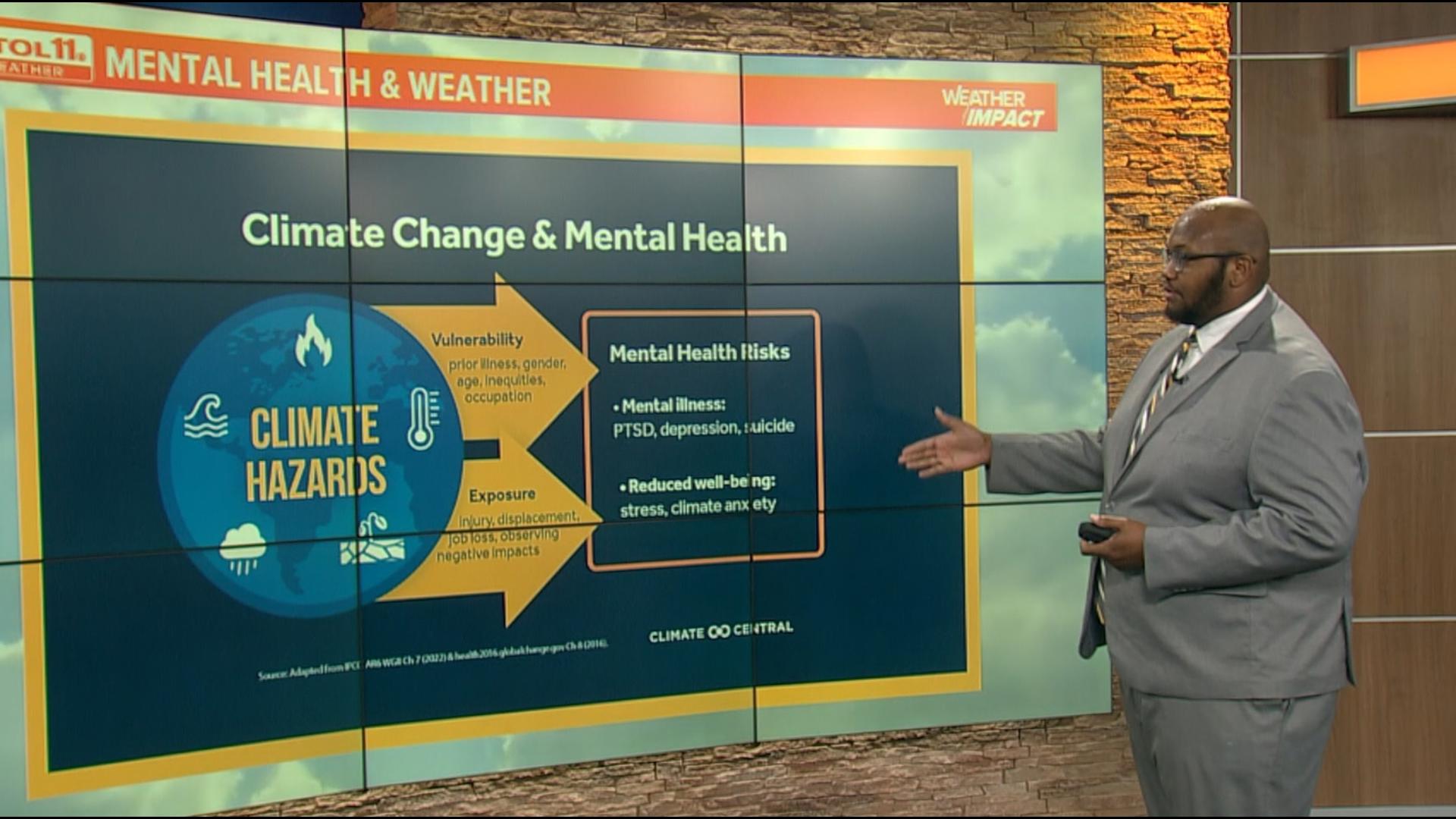TOLEDO, Ohio — Fall is in full effect and as temperatures get cooler and the leaves start to change, we're reminded that Daylight Saving Time is vastly approaching.
This welcomes later sunrises and earlier sunsets as each day comes and goes. As each season is followed by the other, each time of the year signifies a feeling, memory or different type of excitement.
In this week’s WTOL 11 Weather Impact, Meteorologist Matt Willoughby explains how weather and climate can impact our mental health, and examines ways to fight back against it.
Just like weather and climate can bring many changes to our lives, so can the stress of weather changes and natural disasters — one specific time of the year, when the seasons change, can be particularly tough on people.
There could be many reasons for this such as the summer thrill ending or even the lack of events and outdoor activities. As we go into the later parts of the year, all of these factors could lead to sadness and changes in behavior.
More specifically this could lead to a common term called Seasonal Affective Disorder, also known as (SAD).
With the mental health battle becoming more present, it's time to break down the facts.

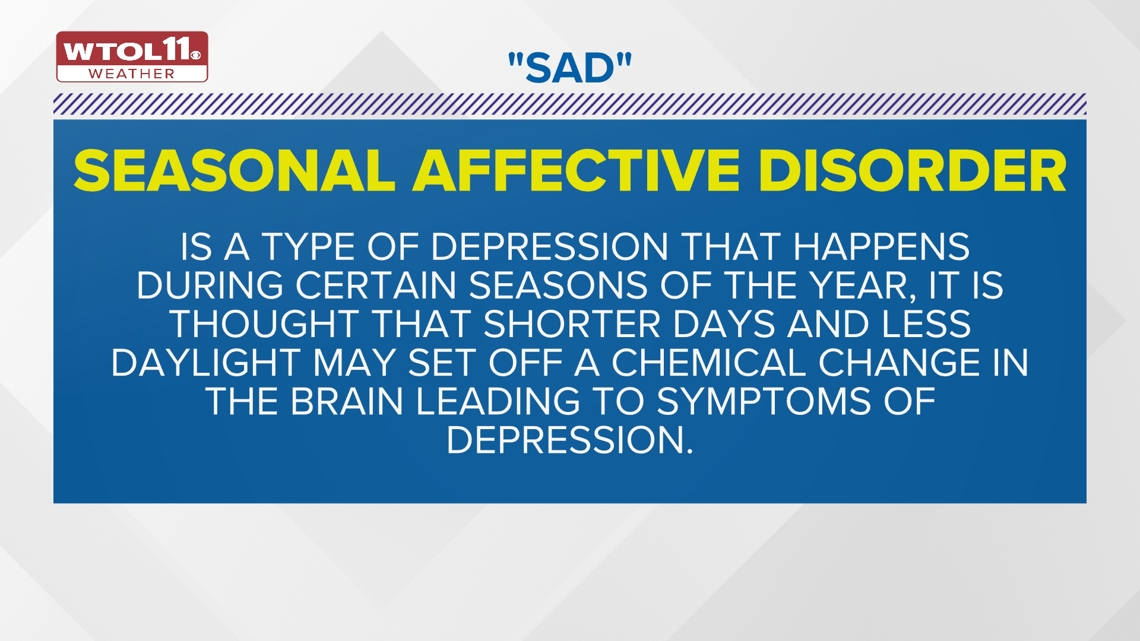
What is Seasonal Affective Disorder (SAD)?
SAD has been mainly associated with the seasons changing, especially during the transition from fall to winter. Typically, around this time of year, we usually see the most drastic changes from mild weather, to brutal cold and less sunlight.
According to the Cleveland Clinic, SAD is a type of depression triggered by a change in seasons, usually when fall begins. This seasonal depression gets worse in late fall or early winter before ending in the sunnier days of spring.
You can also get a mild version of SAD known as the “winter blues.” It is normal to feel a little down during colder months. You may be stuck inside and it gets darker early. But full SAD goes beyond this.

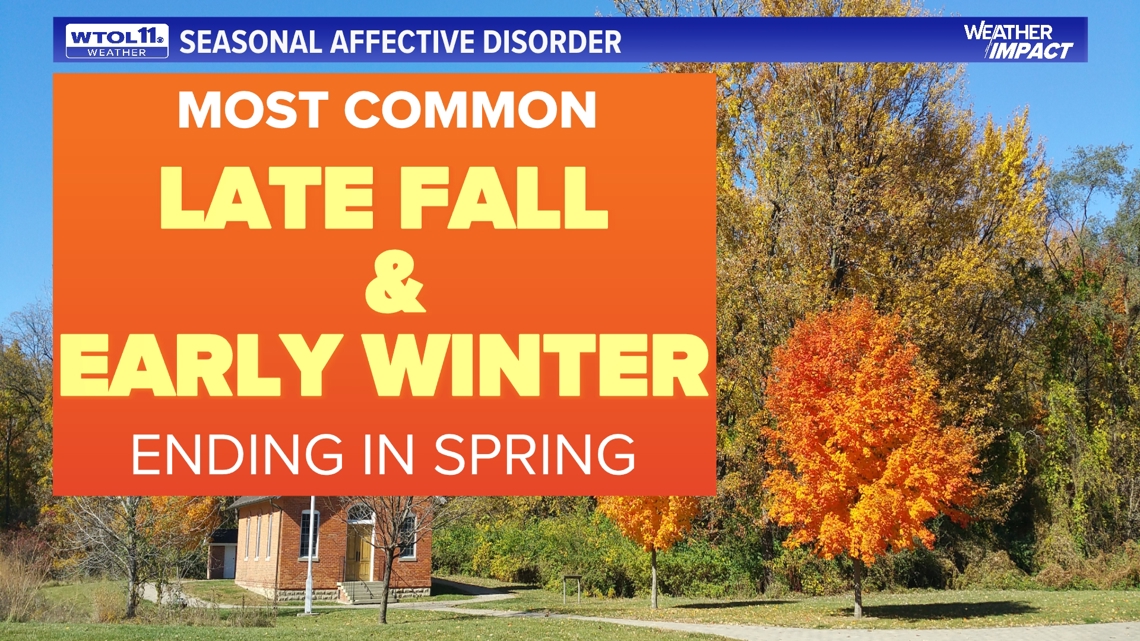
Unlike the winter blues, SAD affects your daily life — including how you feel and think. Fortunately, treatment can help you get through this challenging time. As stated above, it is typically most common during the late fall and early winter, but that does not mean it cannot take effect during other parts of the year.
Normally, once winter ends the impacts of SAD start to decrease due to outdoor conditions warming and sunshine becoming more common, along with outdoor activities.
Symptoms of Seasonal Affective Disorder
Seasonal depression comes in many different forms that can be hard to identify if you are experiencing SAD. Some may go their whole life without even knowing they are being impacted by seasonal depression on a large scale.
According to the Cleveland Clinic, the American Psychiatric Association officially classifies SAD as a major depressive disorder with seasonal patterns.
So, if you have SAD you may experience mood changes and symptoms of depression including: sadness, feeling depressed every day, anxiety, carbohydrate cravings and weight gain, extreme fatigue, lack of energy, feelings of hopelessness or worthlessness, trouble concentrating, feeling irritated or agitated, limbs (arms and legs) that feel heavy, sleeping problems (usually oversleeping), loss of interest in familiar activities and even withdrawing from social activities.

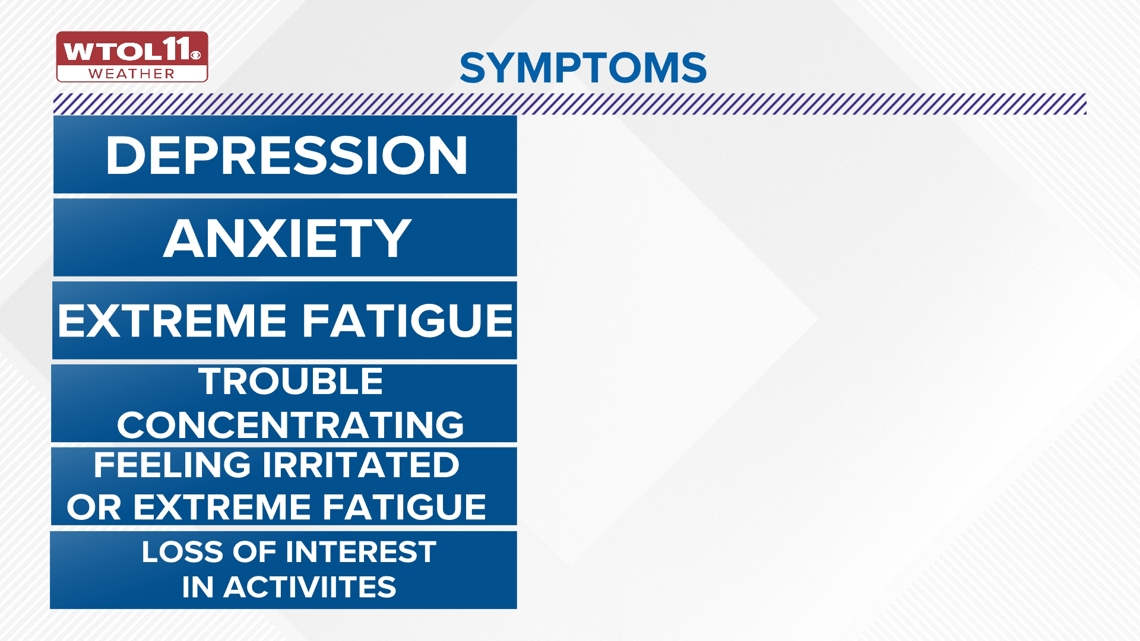
All of these symptoms can be easily overlooked by just thinking that you are simply tired from work, or you may just want to have a nice relaxing day inside.
If you are feeling all of these symptoms, seeking medical help is very key to improving your mental health. To highlight who can be impacted by seasonal depression, the most common group is women.
Studies have shown that women are 4 times more likely to experience seasonal depression than men.

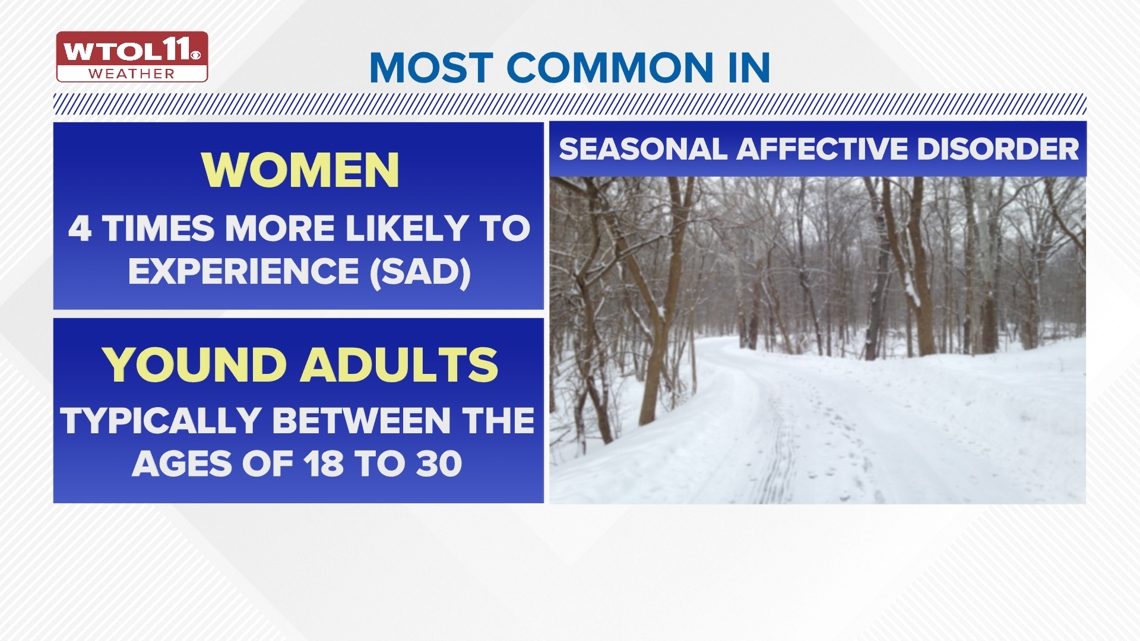
The second group that is at risk is young adults. Any age between 18 to 30 can experience seasonal depression. These 2 groups are highly at risk, because, of how physically active those years usually are.
The root of this may be a chemical imbalance causing depression or even a lack of vitamin D, an efficiency that helps give us energy throughout the day.
Many factors play a role in seasonal changes and the drastic changes that happen during these years.
Climate change and mental health
SAD and weather play a key factor in human health and mental health, but the least talked about topic that is not highlighted as much is climate change impacts that scare people.
The fact is our globe is warming at an alarming rate. Scientists and experts continue to talk about the impacts that human activity is having on the earth and what the harsh reality of our future planet could look like.
This results is many people fearing what will and will not be here by the time they are older. According to Climate Central, nearly 1 in 5 adults in the U.S. live with a mental illness.


A growing body of research suggests that climate change can worsen mental health and well-being. Climate-related risks to mental health and well-being stem from extreme events (such as hurricanes) and gradual, long-term changes (such as sea-level rise).
Up to 54% of adults and 45% of children suffer from depression after a disaster. As natural disasters grow stronger, the impacts and damage left behind truly impact people all around the globe as they must sometimes rebuild from the ground up to return to a type of normalcy.
According to Climate Central, injury, displacement, job loss and even observing negative disasters can truly have a lasting impact on your health.
Fighting back against seasonal depression & mental health impacts of climate change
Although these impacts and factors constantly affect people daily and yearly, some have fought back against this.
If you are being impacted, there is help for easing the effects of seasonal depression:
- The Cleveland Clinic states that spending time outside every day, even if it is cloudy, can help you feel better.
- Eating nutritious meals, despite if your body may be craving starchy and sweet foods, can also help. Healthy foods with enough vitamins and minerals can give you the proper nutrition and energy that you need.
- Exercise — try to get 30 minutes of exercise at least 3 times a week. Exercise relieves stress and anxiety, which can play a role in your SAD symptoms.
- Spending time with friends and staying involved with your social circle and regular activities can provide support during the winter months.


There is always more support and ways to fight back, and just know that you are never alone when it comes to a fight against mental health.
According to Climate Central, the latest Intergovernmental Panel on Climate Change (IPCC) reports review preventative and post-event responses to reduce the mental health risks posed by climate change — including improving access to mental health care, incorporating mental health in resilience planning and training responders in mental health first aid.
The American Psychological Association’s guidance on promoting mental health resilience includes:
- Individual resilience — strengthening social networks, fostering optimism and hope and boosting personal preparedness.
- Community resilience — addressing socioeconomic disparities, preserving cultural connections and expanding disaster response plans with community input.
Weather and climate impact our lives daily but with a little help, we can turn the bad experiences into beautiful life-changing experiences.

